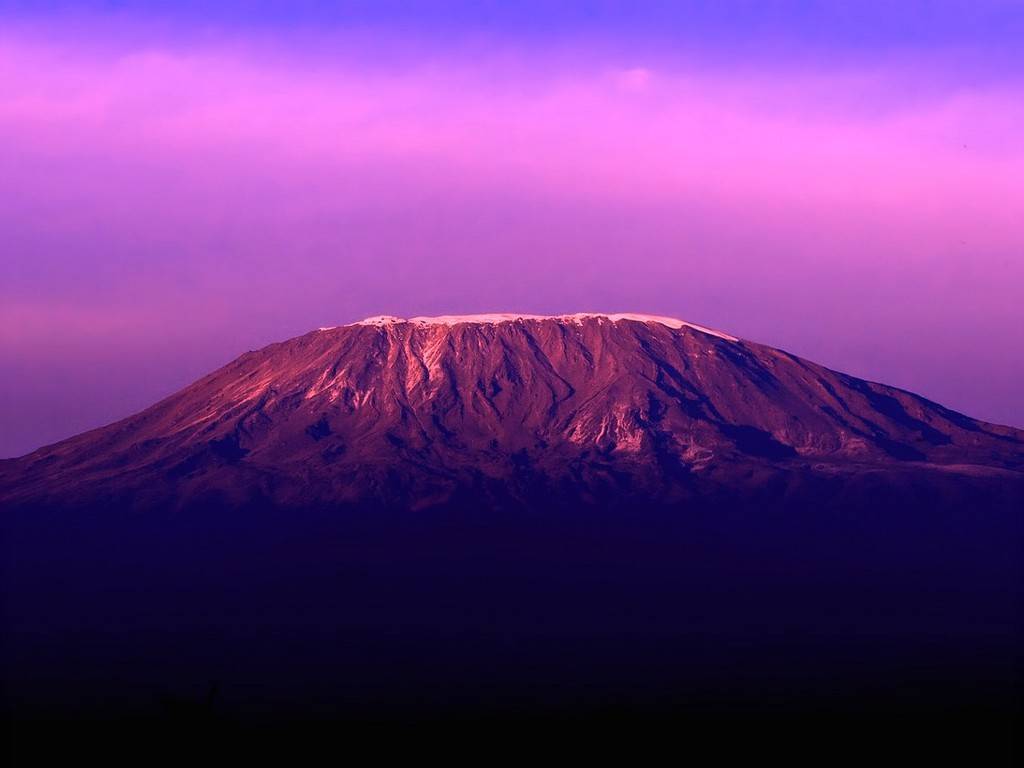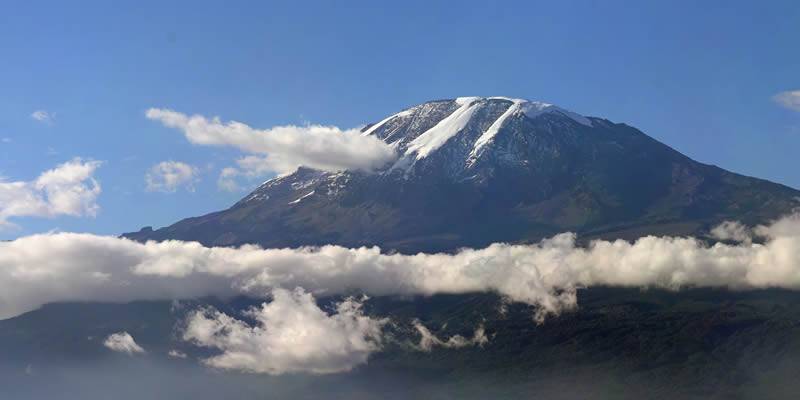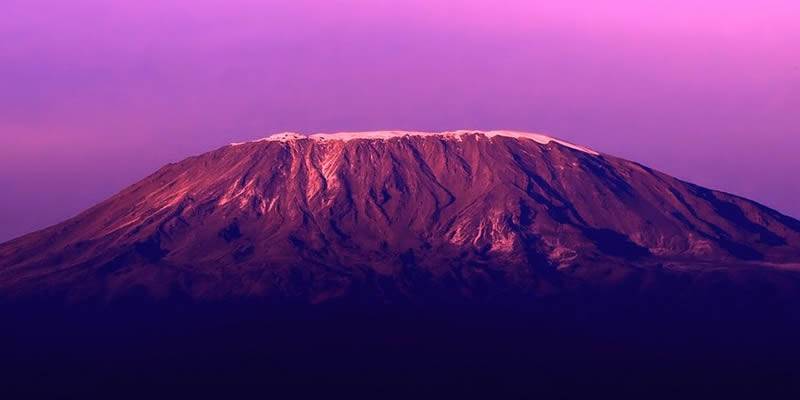14-Day Machame Route and Tanzania Wildlife Safari
Day 1: Kilimanjaro International Airport – Arusha
Karibu Tanzania for your Kilimanjaro and Safari adventure!. Your first night is to be spent at Planet Lodge in Arusha. If you have chosen to be picked up by us from Kilimanjaro International Airport, your Zazu Tanzania Safaris driver will be waiting to meet and welcome you and take you to your lodge in Arusha to relax after your flight.
Day 2: Arusha – Machame Gate – Machame Camp
Today is the beginning of your Kilimanjaro and Safari Adventure. After breakfast (07.00), Leave the hotel 1 hour later to arrive at Machame Gate by around 10.00 read to start your Kilimanjaro climb adventure!. We arrive ready for registration and the start of our trek. The Machame-Mweka Route approaches from the mountain’s southwestern side. Your first day, starting at an altitude of 1800 m, ends at a height of over 3000 m, covers a distance of 11 km and takes around 4.5 to 5 hours of actual walking time. A picnic lunch is enjoyed around 13.00, and water bottles can be refilled. The emblematic giant heathers appear as you reach heathland and the forest thins out. Your first glimpse of Kibo peak. Machame Camp is reached at around 17.00. Dinner is served at 19.30.
Day 3: Machame Camp – Shira Cave
You will soon become used to the early 07.00 breakfast, and today we aim to leave the camp at 08.30. We have a further 800 meters of ascent, finishing the day at 3800 meters, and although the overall distance is short (5km) we will spend around 4.5 to 5 hours actually walking. Our path today is dusty, narrow, and steep. The vegetation is initially made up of forests of heather but soon we will encounter the first of the giant groundsels. The climb before our midday picnic lunch is steep, but there are then great views to the south and to Kibo, all to savor as you eat. With today’s early start and the short distance, we should be at the camp by 14.00, by which time we will have met the moorland lobelias and the distinctive dark obsidian rock of Shira Plateau for the first time. Once at the camp, you will have plenty of time to admire sights such as the so-called Shira Cathedral, Klute Peak, and Mount Meru, before your dinner at 18.00.
Day 4: Shira Cave – Barranco Camp
Starting at 3800 m, by the time we reach camp in the afternoon we will only be 140 m higher, our start and finish we climb up to the base of the Lava Tower at 4627 m, before descending again to our camp. The benefits of acclimatization today are enormous, as you climb high and then descend again for the overnight stop. You climb towards the Lava Tower and your picnic lunch is taken at 13.00. After passing the high point of the day by the Lava Tower, we descend down to the Barranco Camp. Once at camp, which we expect to reach by 16.00, you should take the time to admire the views of the southern face of Kibo as well as the Heim Glacier. Dinner tonight is served at 19.00.
Day 5: Barranco Camp – Karanga Camp
Today we breakfast slightly later (07.30) and our walk is short, being the only 4km but still taking between 3.5 and 4 hours of walking time. Our departure time today will be 08.30 and we will enjoy a hot lunch at 13.00 at Karanga and have the afternoon to enjoy the views before dinner at 18.00. Our altitude gain today is only 160 meters. In the beginning, we encounter the hardest part of today’s stage as we have to scramble up the near-vertical face of the Barranco Wall (also commonly referred to as the ‘Breakfast Wall’ as you tackle it right after your breakfast!). At the top of this climb, you will be rewarded with views of the Heim Glacier. After this, the rest of today’s walk becomes a bit easier as we first descend to the gully below, and into the cold but beautiful Karanga Valley. We then continue and finally climb up a steep series of zig-zags until reaching the Karanga Camp.
Day 6: Karanga Camp – Barafu Camp
Another short day in terms of distance – begins with our breakfast at the camp at 07.30 and another 08.30 departure. Today we will ascend about 500 meters in a distance of around 5km and walk time once again is between 3.5 and 4 hours. We will be aiming to arrive at Barafu Camp by 13.00 when we will be rewarded with a hot lunch. (With tomorrow being the summit day, it will be important to relax and prepare for the hard work ahead.) Dinner tonight is served at 17.30, giving you time to get to bed early. At the end of this valley is today’s goal, the Barafu Camp, at which you arrive after a short, steep scramble and a walk.
Day 7: Barafu Camp – Uhuru (Summit) – Mweka Camp
Today is the most challenging day, but brings the sense of achievement of reaching your goal the summit of Kilimanjaro! Our schedule for our ‘Summit Day’ is of course very different. Rising at 23.00, we take our tea and biscuits (23.30) before a midnight departure. The day starts with the long, tough climb from Barafu at 4600 m to Stella Point at 5745 m. From there it is another 150 m of ascent and 45 minutes walk to the summit. After the summit, we return to Barafu, where we rest for a couple of hours, take a hot lunch and then leave again at 13.30 to continue to descend to Mweka Camp (3100 m) where we spend the night. We would expect to arrive at 17.00 and take our dinner at 19.00. (In total, we cover around 17km today with about 13 hours of walking).
Day 8: Mweka Camp – Mweka Gate – Arusha
Still thrilled by your achievement, breakfast is taken at 07.00 and at 08.00 you can take the chance to reward your trekking team at the ‘Tipping Celebration.’ Departure is at 09.00 and you descend down to Mweka Gate at an altitude of 1640 meters, where you will be served hot lunch at midday and be presented with your hard-earned certificate. Your transport will be waiting to return you back to Planet Lodge in Arusha, where you can choose to relax and celebrate the first completion of your Kilimanjaro and safari advunture!
Day 9: Relaxing Day in Arusha
After a good night’s rest at your lodge, you will take breakfast and relax for the day, on this day you can also launder your clothes and pay directly to the lodge. You will meet your driver guide at 17:00 hrs. for a safari briefing. Lunch on this day is not included.
Day 10: Arusha To Lake Manyara National Park
Start from Arusha for our drive westward to Lake Manyara. First of all, we get an introduction to northern Tanzanian culture, taking a visit to Mto Wa Mbu village. Incredibly, this ‘village’ is actually home to over eighteen thousand inhabitants, drawn from 120 different tribes. Today is an opportunity to find out about their everyday lives, visiting their farms, huts, artisan shops, and the market with your driver guide & sharing his knowledge of the tribal culture.
After lunch, we begin looking for wildlife on the plains, in the acacia woodlands and by the shores of the shallow alkaline lake. Lake Manyara is rightly famous for its tree-climbing lions, but they’re far from the only highlight: by the end of an exhilarating afternoon, you can easily spot elephant, hippo, wildebeest, buffalo, and giraffe, and many other species. Pink-hued flamingos, one of 400 bird species recorded here, provide a splash of color. At the end of the afternoon, it’s back to your lodge for some relaxation and a delicious dinner. Accommodation at Lake Manyara Serena Lodge. FB
Day 11: Lake Manyara To Serengeti National Park
After breakfast, we collect our lunch boxes and leave Lake Manyara, National Park. Our exciting destination is a name familiar to everyone – the Serengeti! Along the way, the sheer scale of the territory and the raw beauty of the landscapes reveal themselves and your driver-guide will help you to spot animals and birds. This is just a preview of things to come, for the Serengeti is home to what is possibly the world’s greatest gathering of wildlife.
After enjoying a picnic lunch, you’ll be eager to pursue some greater wildlife-spotting opportunities in this UNESCO World Heritage Site. Set in the grasslands, savannahs, woods and mountain scenery, which creature will show itself next? These ‘endless plains’ are home to elephant, buffalo, lion, leopard, cheetah, hippo and crocodile — the adventure has truly begun. At the end of the afternoon, exhausted and exhilarated, it’s back to the lodge for dinner and to talk about the many fantastic experiences you’ve had today. Accommodation at Serengeti Serena Lodge. FB
Day 12: Serengeti National Park
Sights, sounds, and smells of Africa are all around us. After breakfast, we start today with the morning section of our game drive in Serengeti National Park, marveling at the stunning scenery, ever-changing the light. and always entertaining wildlife, all explained to you by your driver guide.
After our picnic lunch, we set off again, searching for wildlife in this awe-inspiring park. The myriad of animals and birds are the ‘stars of the show’ and nature’s dramas can unfold at any time. Of course, the animals don’t work to any schedule, so we may find a lion, leopard, elephant, zebra, cheetah or antelope at any time on our drives. At the end of the afternoon, we return to the comfort of the lodge for dinner and some much-needed rest. Accommodation at Serengeti Serena Lodge. FB
Note: For those who have booked the Balloon Safari for today, you will be picked up from the lodge at 05.00 hours for a 06.00 hours departure. After your 90 minutes aerial adventure, bush breakfast, and champagne, your driver will pick you up for your game drives.
Day 13: Serengeti National Park To Ngorongoro
The exciting sounds of Africa will rouse you from your sleep. We make the most of the day, with your driver guide meeting you for a 08:00 start to head off on our morning game drive. Later, the adventure will continue when we travel up to Ngorongoro, another African natural icon.
It’s almost impossible to spend too much time in Serengeti and with more than 1.6 million herbivores plus thousands of predators, there’s always something new and interesting to see. The changing seasons and natural light simply add to the diversity. This morning your driver-guide will help you spot some more of the many species at Serengeti, teaching you about their fascinating habits and habitats.
After a pleasant picnic lunch, it’s time to drive eastwards to visit another spectacular setting for Tanzania’s wildlife, the famous Ngorongoro Crater. On arrival, settle in at the lodge while a tasty, hot dinner is prepared for you. Tomorrow, the wonders of the Ngorongoro Crater await us. Accommodation at Ngorongoro Serena Lodge. FB
The Ngorongoro Conservation Area covers 2,286 sq km and encompasses the volcanic area around the Ngorongoro Crater – including the still active volcano of Oldonyo Lengai and the famous Olduvai Gorge. Its centerpiece, the Ngorongoro Crater, is the largest unbroken caldera in the world and the first sight of it is breathtaking. The floor of the crater is only 100 sq miles but is home to around 30,000 animals with a high concentration of predators.
The crater supports up to 25,000 large mammals. Grazers dominate the landscape: zebra and wildebeest account for almost half the animals; and gazelle, buffalo, eland, hartebeest, and warthog join them. Giraffes stay away because there is insufficient food at tree level. An odd feature of the crater elephants is that they are almost exclusively bulls. Breeding herds – comprising large numbers of females and young with a few attendant older males – are probably unable to find sufficient quality food in the crater.
Ngorongoro has a high quantity of carnivores which are drawn by the large herds of prey animals. It has the densest population of large predators, mainly lion – about 100 – and more than 400 spotted hyenas, living in eight clans of up to eighty individuals. Both lions and hyenas will scavenge from each other, depending on weight of numbers and of course, hunger levels.
Most of the bird wildlife in Ngorongoro is seasonal. Also influencing the variety of bird species on display is the ratio of soda to the fresh water in the largest expanse of water on the crater floor, Lake Magadi. The lake is alkaline due to deposits of volcanic ash thrown out by surrounding volcanoes.
Day 14: Ngorongoro Crater Arusha / Kilimanjaro Airport
After breakfast descends into the crater for the tour around the unbroken caldera that encloses the wildlife. We take lunch at Ngorongoro crater picnic site near Lerai Forest or hippo pool, and after lunch, we proceed with a game drive en route out of the crater back to Arusha. Today may be the end of your Kilimanjaro and safari advunture, but it is also the beginning of another exciting adventure.




